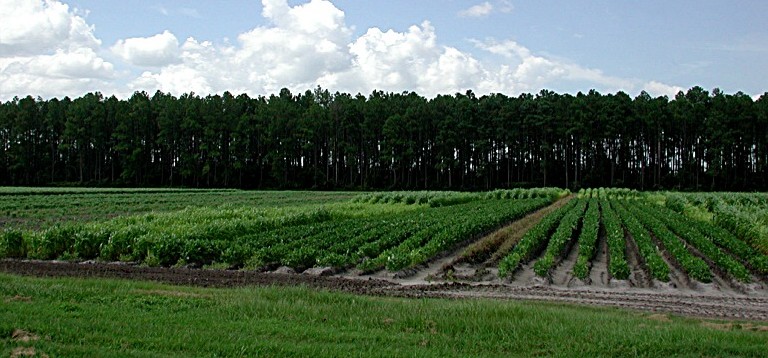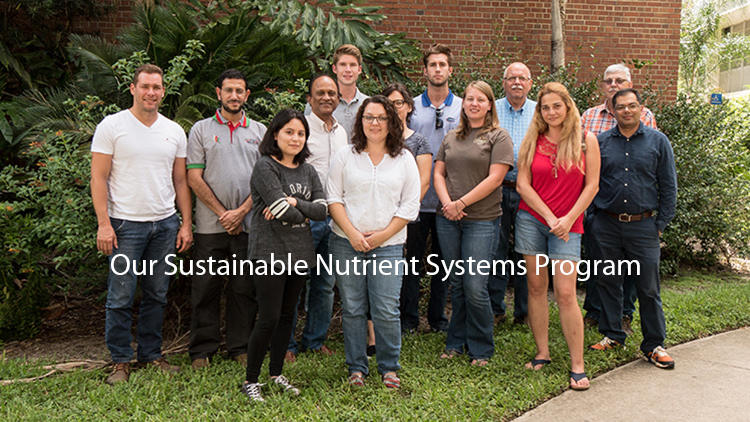Utilization of Legumes in Crop Rotation Programs to Reduce Nitrate Leaching from Potato Production into the Upper St. Johns River Watershed
FAES Project Number: SWS-03865
C.
M. Hutchinson and R.S. Mylavarapu
Funding Agency: FDACS – Nitrate Bill
Duration - Short
UF/IFAS Hastings REC
Nitrate leaching studies on potatoes grown on soils underlain by Hawthorne
formation, managed under under intensive nutrient and seepage irrigation
conditions
Fernando Munoz – Ph.D. student - dissertation
Goals and Objectives
Comparison of colorimetric and ICP Mehlich-1 and -3 extractable
phosphorus concentrations indicate that the P concentraions tend
to be overestimated by the ICP techniques. A regional study (southeast)
has been initiated through the SERA-IEG-6 committee to investigate
the reasons for accurate P determination and identify the appropriate
techniques.
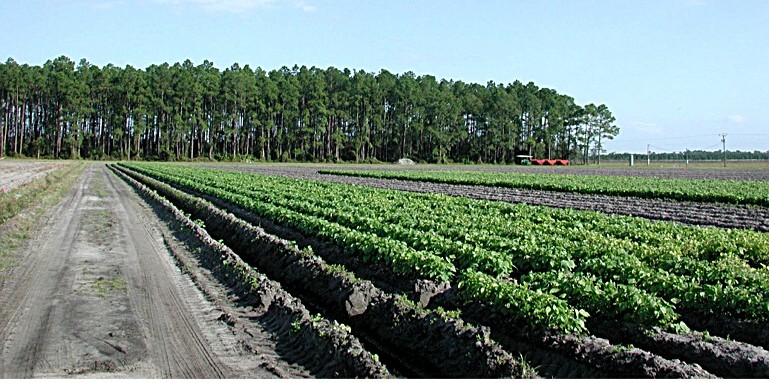
St. Johns River Water Management District is considering Best Management
Practices (BMPs) for potato production in the tri-county area near Hastings,
for reduction of nitrate levels in the water bodies. Although the BMPs
do not restrict farming, potato growers are concerned that the fertilizer
recommendations may result in reduced production. This project investigates
the ability of legumes planted as both summer crops and fall cash crops
to supply nitrogen to the following potato crop. With legumes in rotation,
growers may be able to supply potato plants with high rates if nitrogen
while meeting the BMP rate for inorganic nitrogen.
Objectives:
1. Increase crop diversification and production in the tri-county potato
production area while maintaining or reducing nitrate movement from
farming operations into the St. John's River.
2. Compare the leaching potential associated with alternative crop rotation
schedules to traditional potato production practices.
3. Document crop growth and production under a reduced inorganic nitrogen
system that takes advantage of legumes for nitrogen production.
4. Develop an analysis of the economic and returns associated with alternative
cropping systems compared to traditional potato production practices.
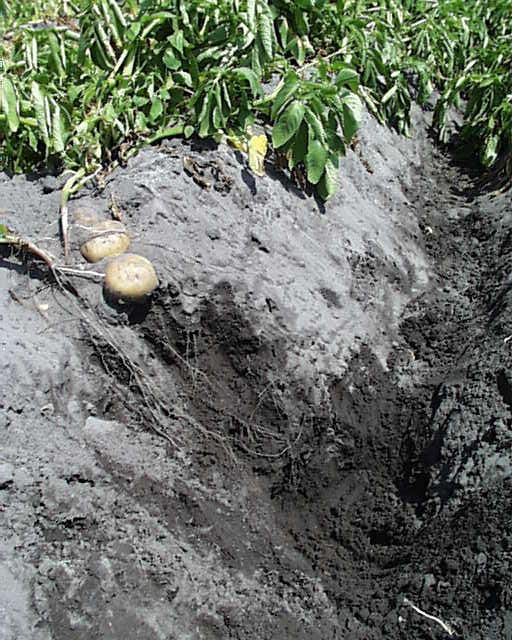
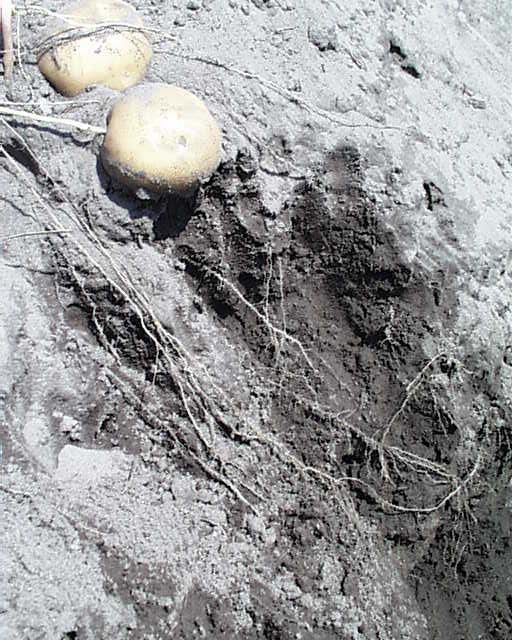
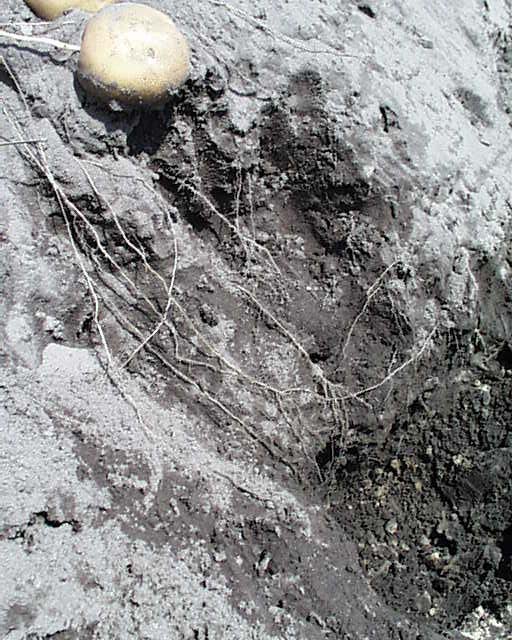
Minimizing potential nitrogen leaching in potato crop rotations and root uptake efficiency
FERNANDO MUNOZ
Graduate Research Assistant
Soil & Water Science Department
UNIVERSITY OF FLORIDA
Abstract
The tri-county agricultural area (TCAA), St Johns, Flagler, and Putnam counties, is the largest potato production area in Florida (8,000 to 10,000 hectares annually). The St. Johns River Water Management District implemented Best Management Practices in the TCAA to limit nitrate non-point source pollution in the St. Johns River from potato production. Crops are produced in the TCAA with seepage irrigation, with this system, a perched water table is maintained approximately 0.5 m below the top of the potato row during the season. A three year project was initiated in 2001 to evaluate the impact of potato, cover, and cash crop rotation on nitrogen use and leaching during the potato season. The treatments were the summer cover crops of sorghum-sudan grass or cowpea followed by the fall treatments of a green bean cash crop or fallow. Potato was planted in the spring and fertilized at five nitrogen rates (0, 112, 168, 224, and 280 kg N ha-1). The experimental design was split plot with rotation treatment as the main plot and N fertilization rate as the subplot. Preliminary results demonstrated no increase in tuber yield in plots fertilized with more than 168 kg N ha-1 of N. Tuber yields were 20, 33, 34, 31 and, and 27 MT ha-1 for the N rates mentioned above, respectively. However, fertilization with more than 168 kg N ha-1 resulted in significant residual nitrogen expressed as increased summer cover crop biomass. Biomass for sorghum planted in the summer was 20.82, 36.41, and 80.71 g (Dry weight/2 plants) for the 0, 168, and 224 kg N ha-1 potato nitrogen treatments, respectively. Nitrate level for all treatments was near to 20 ppm of NO3- at potato planting diminishing to 0 ppm of NO3- at the end of potato season.
As part of my dissertation, a study of how different nitrogen rates affect the spatial root distribution of potato will be done, to do it, a transversal slice of the ridge where potato is growing will be take. This slice will be sliced in three layers and each layer sliced in sub samples. All roots contained in each sub sample will be separated from the soil and root length, diameter classification, and root surface area will be measured by scanning and image analysis. The information obtained with this study will help to know more about potato root uptake, specially nitrate uptake.
Cover Crop Incorporation (8/22/01)
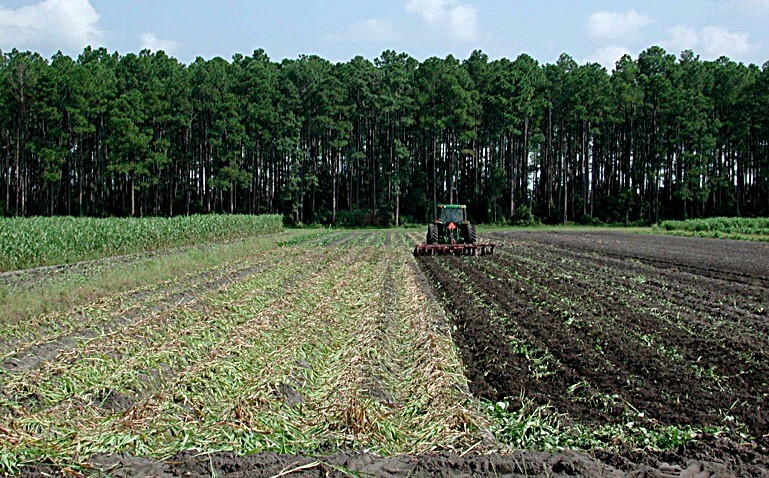
Summer Cover Crop (7/27/01)
